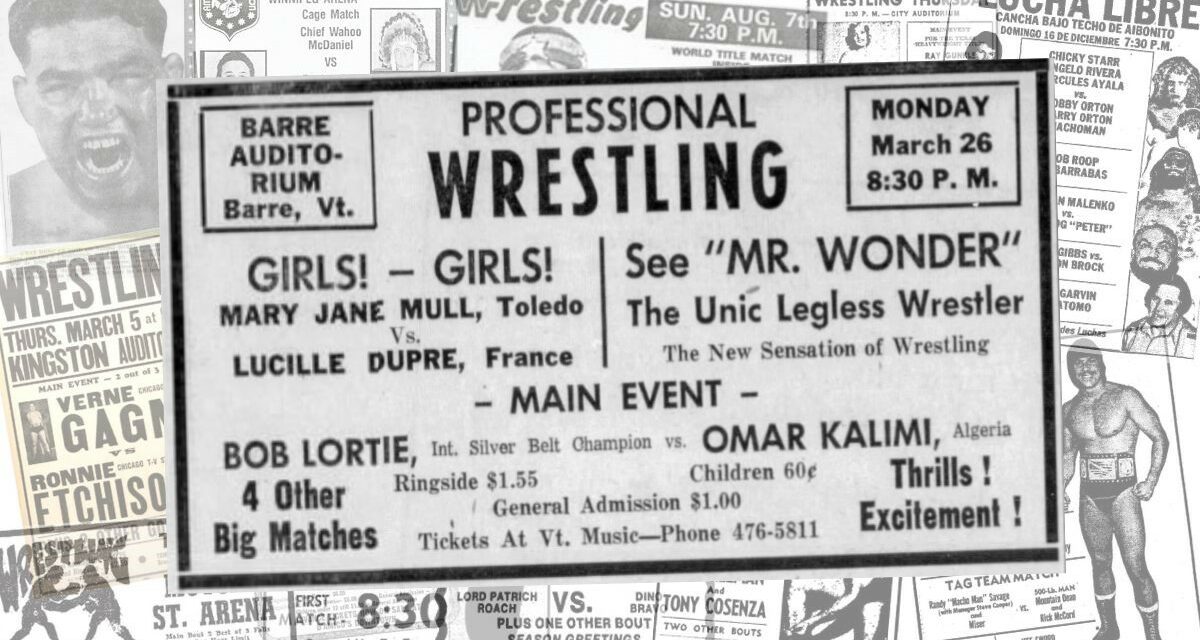I recently have been in an ongoing discussion with one Greg Oliver about some of the intriguing “what ifs” and unanswered questions about our fair sport and the wrestlers who compete within it. More precisely, we’ve been discussing wrestlers who are complete mysteries, despite the endless stacks of wrestling magazines, newspaper archives, and other materials on which we consistently get our hands.
For Greg, it’s the unknown names that pop up in his local results (see Mat Matters: Humbled by History for a much better explanation). And for me? Well, I’m not going to lie, it’s essentially the exact same thing — I just didn’t realize it until right now.
My “white whale” popped up about a year ago as I worked through New England wrestling results. I had been attempting to get a better idea of what talent was working Tony Santos shows for his Big Time Wrestling promotion, but accidentally stumbled upon a show report from Barre, Vermont, from 1961, featuring a wildly-popular “legless wrestler” called Mr. Wonder, who “enjoyed the strongest fan support of the evening,” on what appears to be a Montreal-office card.
And a frantic image search returned the following image:
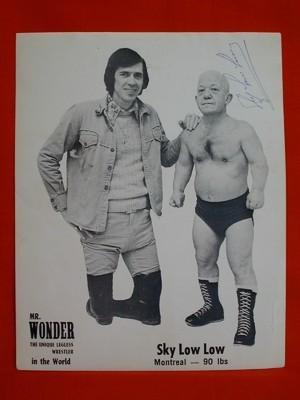
A publicity photo for Mr. Wonder and Sky Low Low, 1961.
Needless to say, I was very intrigued and knew I had to dig deeper, to try and shed some light on this mysterious character and hopefully provide some answers to my many questions. So here we are, but first, let’s work our way through the card for old times’ sake – and here it is:
Barre Auditorium, Barre, VT – Monday, March 26, 1961 (Attendance: 1,500)
- Bob Lortie beat Omar Kalini
- “Cowboy” Lewis beat John Godouas
- Eugenio Perez beat “Killer” Pat Patterson, 2-falls-to-1
- Lucille Dupre beat Mary Jane Mull, 2-falls-to-1
- Mr. Wonder beat John Godouas (sub. For Pat Murphy)
This card took place at the Barre Auditorium in scenic Barre, Vermont. The Auditorium is a reasonably small venue thanks to its age, constructed in 1939 and holding just 1,856 seats. Despite that, it remained a popular venue for wrestling for decades, usually accommodating wrestling under the auspices of promoter Ira Blow, a Burlington, Vermont-based ex-cop turned promoter who would book cards in the state through the 1970s.
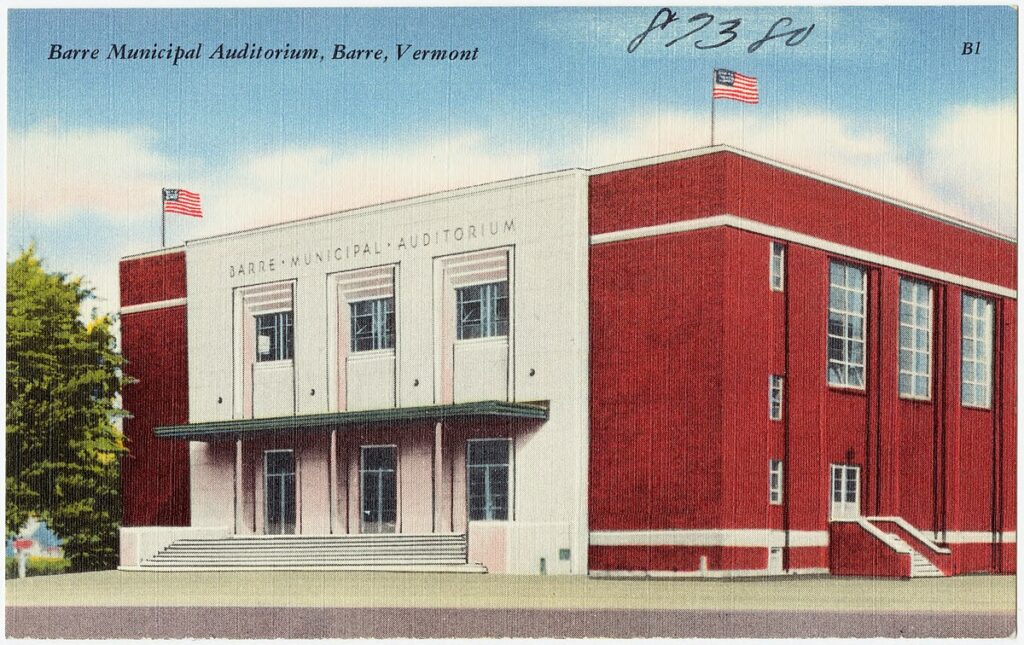
Postcard image of the Barre Auditorium in Barre, VT. The arena seats 1,856 spectators.
The card’s main event pitted Bob Lortie and Omar Kalini (of Algeria) in a one-fall contest. Lortie isn’t likely to be a name many are familiar with. Still, his family is Canadian wrestling royalty, with Bob and his brother Paul proving an exceedingly popular tag team in Quebec and further afield. Two sons, Andre and Paul, followed in the pair’s footsteps, with a third nephew, Donald, later joining the professional ranks as a masked “Medic.”
The Lorties (and especially brother Paul) were beloved in their native province but found it more manageable as foreign menaces from France when away from home. Their native tongue allowed foreign promoters to bill them as famed French champions, renowned for their in-ring skill and devil-may-care attitude.
Another bout saw a very young Pat Patterson (still using his “Killer” persona) defeat Eugenio Perez in a best-of-three-falls match. Patterson had only begun in the business the previous year and had spent much of the rest of 1961 battling the likes of Emile Dupre, Black Magic, and Jack Pfefer’s Haystacks Calhoun knock-off, Haystacks Muldoon. This was a challenging period in his early career, with money rarely matching his work ethic (with the rare exception of a lucrative match in the Buffalo territory for Pedro Martinez).
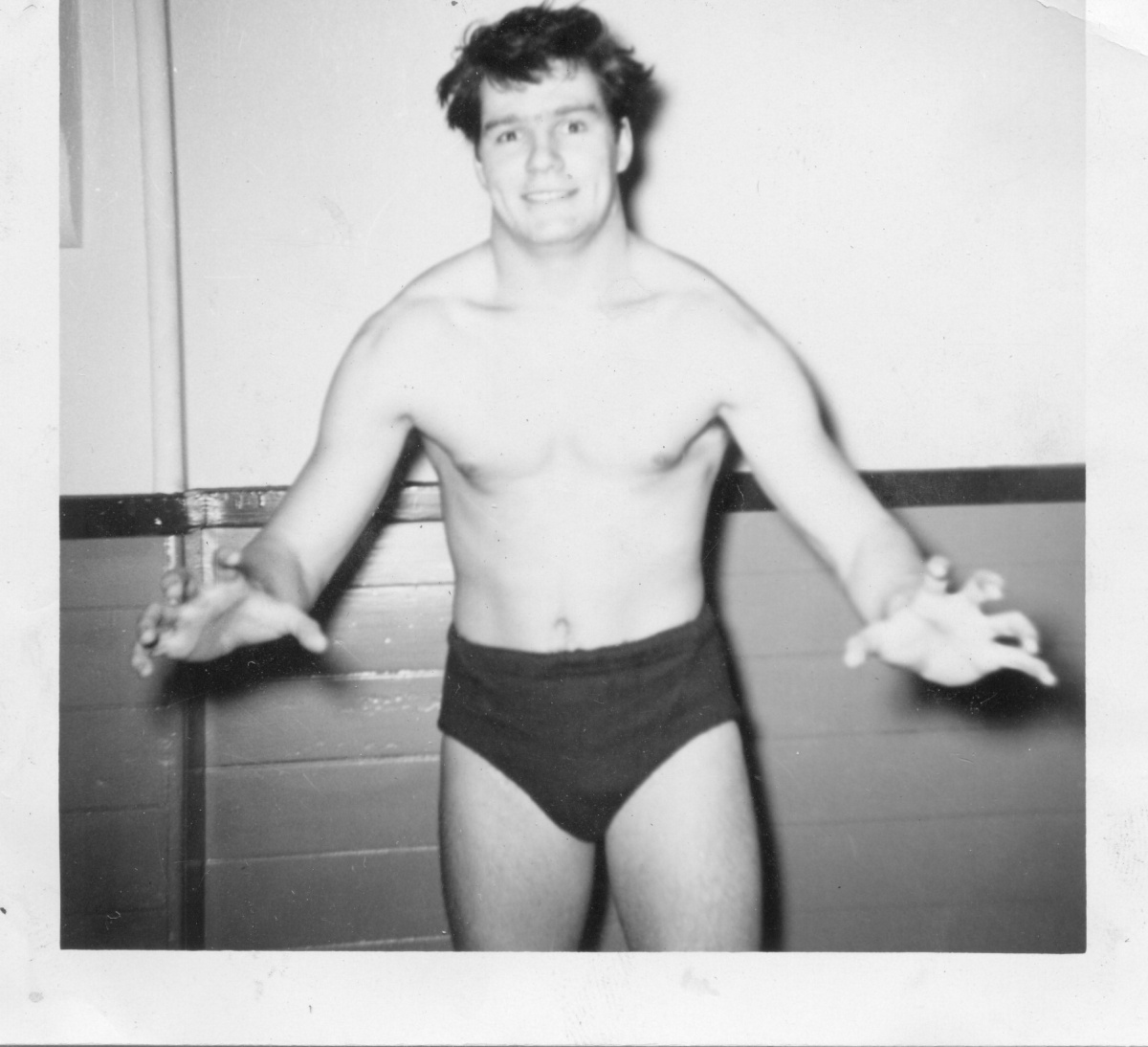
Pat Patterson during his early wrestling career.
Eugenio Perez, like Omar Kalini in the wind-up, is something of a mystery. His name appears in results for Maine and Massachusetts, making him likely a Tony Santos trainee (though maybe Les Thatcher can shine some light on that?) Like Kalini, his name appears briefly before vanishing into the ether.
While the card likely used talent from the Montreal booking office, there is bonafide Jack Pfefer and Tony Santos talent on the show: Lucille Dupree and Mary Jane Mull. Dupree was Lucille Paulhus from Pawtucket, Rhode Island, who started at Tony Santos’ Wrestling School at the Boston Arena under the tutelage of New England lady’s champion and world title claimant Alma Mills. Mull, for her part, was a claimant of the Virginia women’s title at the time and is easily recognizable in press photos thanks to her colorful, poofy ring jacket.
Finally, we’re getting to the meat of the matter, but first, another mystery man (though not currently one that fills me with wonder), John Godouas of Montreal. I tried, I really did, but I just can’t seem to find anything on the man; it seems to be a trend, but fortunately, it can be spun into content.
Godouas had the ignominy on this card to lose twice, with local favorites taking two undercard falls against the Montreal-based grappler. First, to our hero, Mr. Wonder, and later in the semi-windup versus local favorite “Cowboy” Hugh Lewis.
Cowboy Lewis was a lifelong native of Vermont (Charlotte, to be precise). A dedicated public servant, Lewis served his community for over four decades as a Marine, a dogcatcher, a police officer, and a local constable. Beyond that, Lewis was also a longtime member of the Friendship Lodge #24 F&AM, Charlotte Grange #398, and LaPlotte Chapter 64 O.E.S., meaning he could be relied upon to draw a solid crowd.
But Lewis’ credentials were far grander than being local and having friends. He was also an accomplished athlete, competing in Golden Gloves tournaments before turning his eye to stunt work, rodeo, and professional wrestling. Lewis was famed for his strength, skill with horses, daredevil stunts, and charitable acts; he was well-known for his accomplishments in rodeos, with his bullwhip and high jump his calling card.
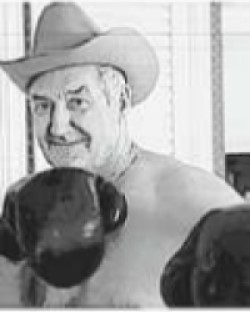
But Godouas’ first opponent is why we are here: Mr. Wonder. So who the hell is this, Mr. Wonder, anyway? The short answer is “I don’t know,” but a better image appears over time.
The gimmicky appeal of Mr. Wonder also appears to have a very short shelf life. His appearances in 1961/62 are minimal, with the name disappearing after only a handful of shows, before reappearing in the next province over and part of a wrestling tour seemingly organized by The Great Antonio two years later.
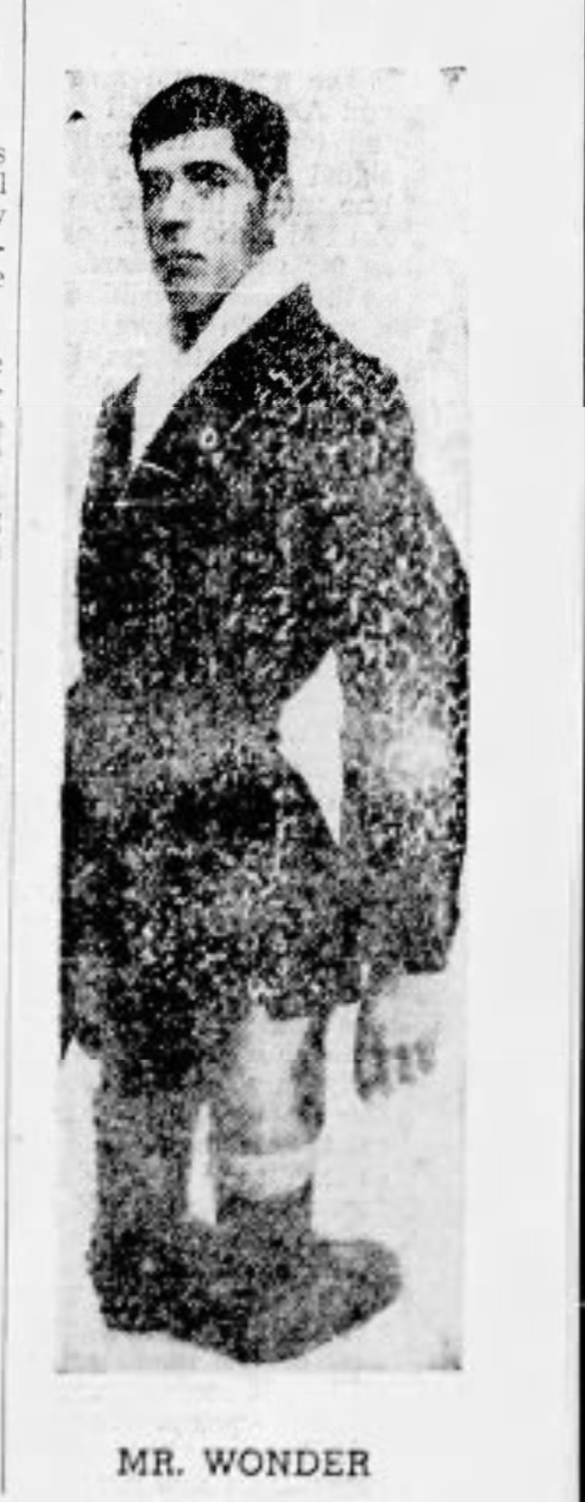
Another shot of Mr. Wonder, the legless Indian wrestler.
The Great Antonio was really Antonio Barichievich, a Yugoslavian-born strongman and eccentric who emigrated to Canada in 1946 and developed his massive frame while living at (and working in) a scrap yard in Montreal. Over time, he would branch out into feats of strength before turning towards professional wrestling and promotion.
Antonio was a one-of-a-kind person in a business overflowing with eccentrics. “He was truly a character in a business that by nature is full of unusual characters,” recalled “Butcher” Paul Vachon in an obituary for The Great Antonio on his passing in 2003. “Nobody ever really knew his origins, but he spoke in a mixture of French, Italian, English, and Russian, and I think a little Hungarian was thrown in the mix.”
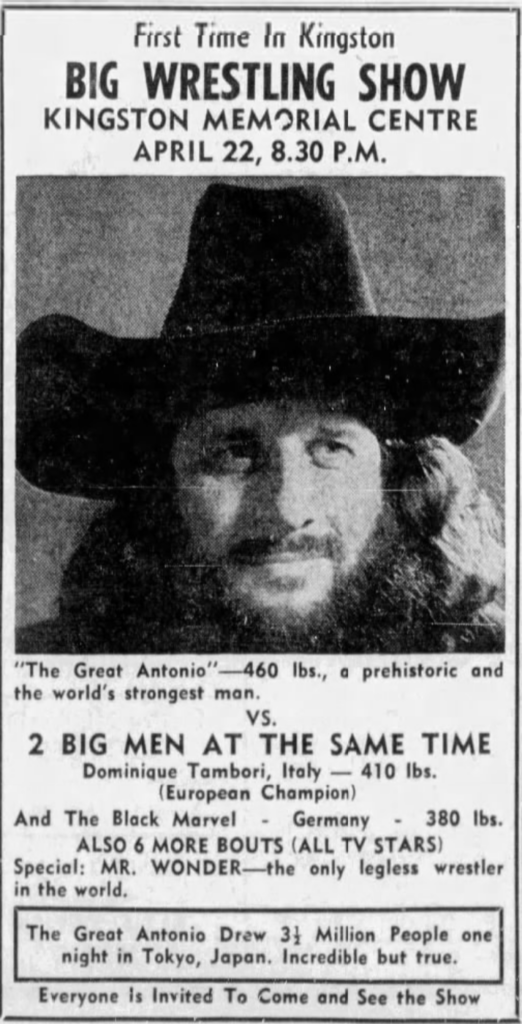
The Great Antonio and Mr. Wonder on Kingston, Ontario advertisement.
The tours were hardly that, with the group hoping to establish a regular routine through Kingston (Kingston Memorial Centre), Owen Sound (Owen Sound Arena), Sarnia (Sarnia Arena), and Windsor (Windsor Arena), and featuring names like Dominique Tambori, Germany’s “the Black Marvel” (a 380-pound masked marauder), Cowboy Jones, Ray Wallace, Jerry Patel, Guy Numa, and more.
But even here, the appeal of Mr. Wonder rarely rose beyond a preliminary curiosity, with his steady opponent someone named “Killer Kangaroo,” whom I presume is a one-legged wrestler (or he can only bend at the knees, I don’t know). Here’s a shot of the two being separated after a touchy affair at the Kingston Memorial Centre in Kingston, Ontario:
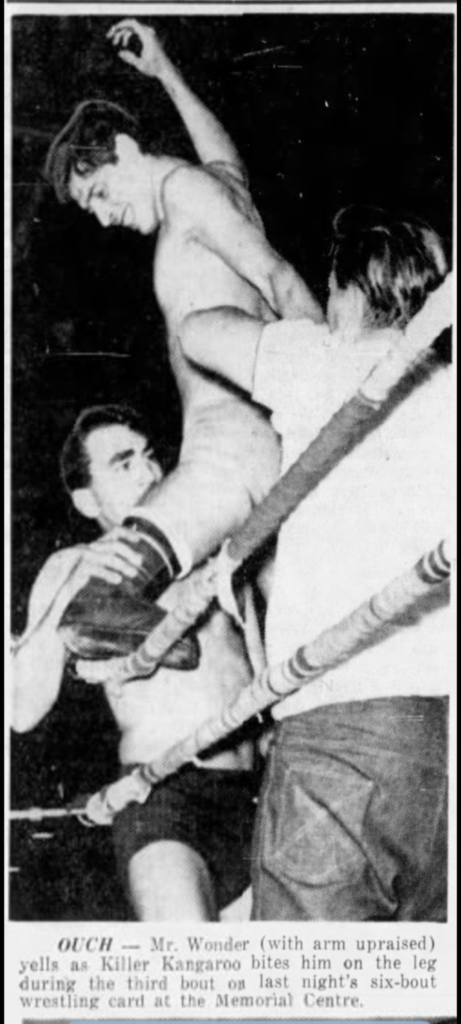
Mr. Wonder and Killer Kangaroo are counted out of the ring and mayhem ensues.
And again, the novelty quickly wore out, with the June 30, 1964 card at the Kingston Memorial Centre canceled after the previous week’s card failed to draw more than 300 paying customers — an absolute disaster. And it’s after this cancelation that the story of Mr. Wonder again runs dry.
So, what do we know about this mysterious Mr. Wonder, the “unique legless wrestling in the world?” Not much, but there’s still some juicy tidbit we can work with.
First, his backstory. According to the press for the tour, Mr. Wonder (born in 1934) was a seasoned wrestler from Bombay, India, who lost his legs in an in-ring accident in Pakistan in 1955. And if you are wondering what sort of in-ring grappling mishap results in losing both your legs and nothing else, here you go:
“I fell wrong.” Mr. Wonder told the Canadian media, “and they had to be amputated just below the knee.” But that curse turned out to be something of a mixed blessing for his wrestling career
“That gives me my balance,” he continued, explaining he wore his wrestling boots backward with his stumps inserted where a normal person’s foot would go. According to the reports, he made his living out of wrestling, despite his amputated leg, stating, “I don’t consider myself as a handicapped person. Anything you can do with your legs, I can do. I’m not saying I can do them as well, but I can do them.”
But here the trail of Mr. Wonder runs dry. His name disappears and the exploits of a “legless wrestler” are taken up by a young, courageous North Carolina teen, Dickie Bryant of Charlotte Harding, who won consecutive state championships at the 103-pound classification in the mid-’60s.
As Greg so eloquently put it in his recent Mat Matters, “There’s a feeling of beating my head against a wall, knowing I’ll never crack through, never learn everything, never crack all the codes,” and nowhere is that more apparent than with Mr. Wonder. His 8×10 with the legendary Sky Low Low (my father’s favorite wrestler and called the “Lou Thesz of the midgets” by many in the business) frustrates me, as do the saved press clippings and images saved on my phone.
He is a riddle that must be solved, yet the reality is that a definitive answer is a long shot. And perhaps it’s that joy, the hunt. After all, I must enjoy it. Otherwise, I wouldn’t have torn up an article on Shawn Michaels and started over from scratch, right? Right?
RELATED LINK
